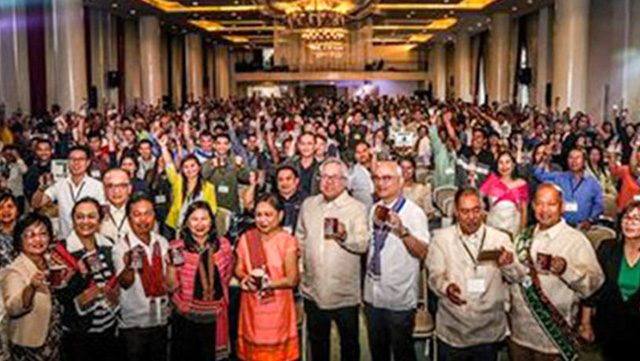SUMMARY
This is AI generated summarization, which may have errors. For context, always refer to the full article.

BAGUIO CITY, Philippines – Kirstin Reyes worked for 7 years in Singapore where she began an affair with coffee. When she returned to her home in Tuguegarao City in 2013, she roasted coffee and created her own coffee brand. In 2014, she opened Barako Boy, Tuguegarao’s first coffee shop that sold specialty coffee at a low price. Four years later, Barako Boy is thriving and well, frequented by regulars and walk-ins from a nearby hotel.
Reyes is among the 700 participants of the 3rd Philippine Coffee Conference held in March in Baguio City, organized by the Department of Trade and Industry (DTI) and the Department of Agriculture (DA). All of the participants – whether engaged in coffee production, processing, trade, roasting or marketing – came from all over the country. The huge turnout of participants, representing almost all of the regions in the country, illustrates the country’s engagement with the bean.
The Philippines, which lies on the so-called “coffee belt,” has favorable climatic conditions to grow all 4 varieties of coffee, namely Robusta, Arabica, Excelsa, and Liberica throughout the country. The largest coffee producing regions in the country are based in Mindanao – Soccsksargen, the Autonomous Region in Muslim Mindanao, and Davao.
A long history of coffee in the Philippines
The industry’s rich albeit dramatic coffee history has witnessed the rise and fall of fortunes. In the 19th century, the country was the world’s leading exporter of Arabica coffee, until the 1890s, when the proliferation of coffee rust and other diseases totally decimated the crop. The country rebounded by shifting to Robusta up to the latter half of the 20th century but failed to recover its world leadership in the commodity. In the 1990s, global coffee 2001 coffee crisis, the domestic industry, which has relied on smallholder producers, collapsed.
And yet optimism prevailed as demand for coffee increased with rising incomes. By 2010, retailers were making the most of the Filipino’s need for the brew. According to a study conducted by Washington-based Duke Center for Global Value Chains, the decade saw the proliferation of a younger generation of Filipinos preferring to consume convenient instant coffee to get their daily dose of caffeine. Meanwhile, wealthier Filipinos, particularly in the urban areas, supported the emergence of a specialty coffee sector hence the proliferation of brands such as Starbucks, UCC, and Coffee Bean and Tea Leaf, as well as small local coffee shops.
Local demand bodes well for the coffee industry
The increase in local demand for coffee has prompted coffee stakeholders to get their act together. To focus efforts in revitalizing the industry, Trade Secretary Ramon Lopez and Agriculture Secretary Emmanuel Pinol approved the Philippine Coffee Industry Roadmap (2017-2022), a product of more than 3 years of organizing the sector.
At the 3rd Philippine Coffee Conference, Senator Cynthia Villar discussed convergence of various government agencies including the Philippine Coconut Authority, the Department of Environment and Natural Resources, and the Department of Agrarian Reform in supporting coffee production. Agriculture Undersecretary Evelyn Lavina presented various programs being implemented with the support of various universities and private sector partners. Secretary Lopez talked about coffee as a priority of his deparrment’s industry clustering program, to ensure markets and market readiness for Philippine products.
Efforts are slowly paying off. In terms of quality, Philippine coffee is reaping international awards for taste. One sterling example is Bana’s coffee, a single-origin brand from Sagada, which was awarded the Medaille Gourmet at the International Contest for Coffees Roasted in their Countries of Origin organized by the Agency for the Valorization of Agricultural Products in Paris, France.
While there is more work ahead for the coffee industry, there is palpable confidence among coffee stakeholders in the country. Conference participants share animated conversations over cups of the country’s best coffees. Big traders raffle off prizes – expensive coffee equipment – and everyone roots for the farmer who wins a depulper or a barista who wins a complete set of tools. At the 3rd Philippine Coffee Conference, coffee as an industry is hot and brewing. – Rappler.com
Add a comment
How does this make you feel?
There are no comments yet. Add your comment to start the conversation.